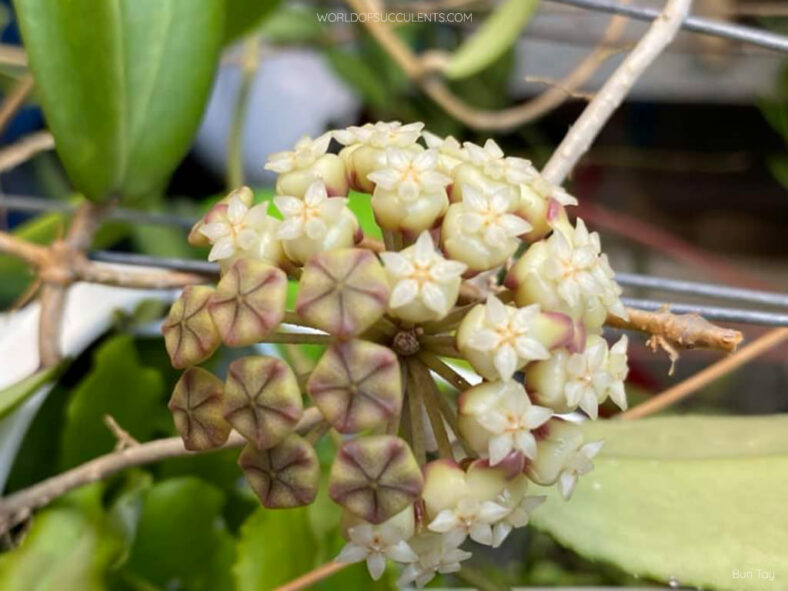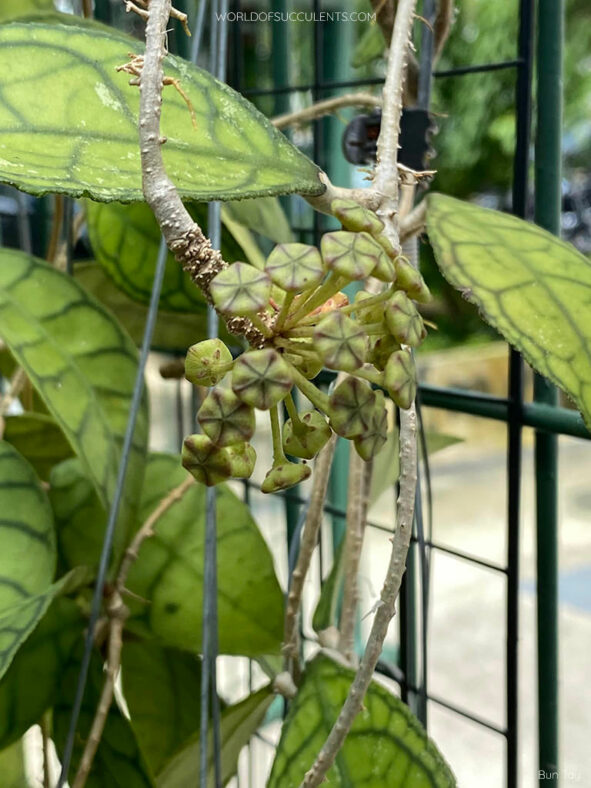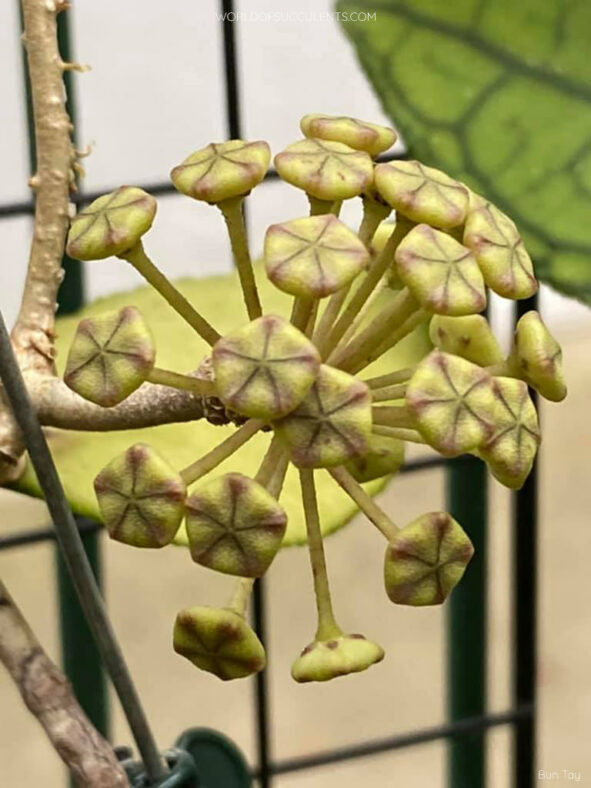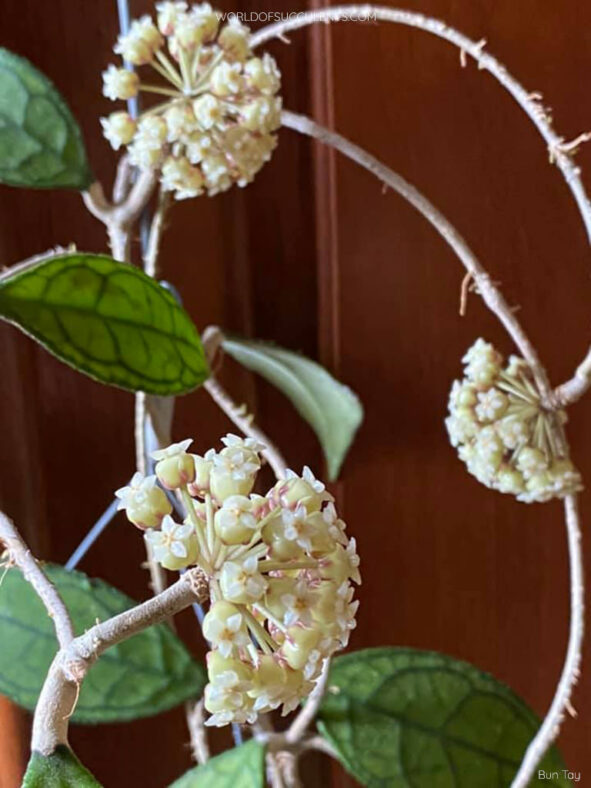Hoya finlaysonii is an attractive plant that can liven up any space. It is mainly grown for its stunning leaves, but the small clusters of fragrant flowers in spring and summer add an extra touch of elegance to any indoor area.
Scientific Name
Hoya finlaysonii Wight
Scientific Classification
Family: Apocynaceae
Subfamily: Asclepiadoideae
Tribe: Marsdenieae
Genus: Hoya
Etymology
The specific epithet "finlaysonii" (pronounced "fin-lay-SOH-nee-eye") honors George Finlayson (1790–1823), a Scottish naturalist, traveler, and one of the finders of this species on Penang Island in Malaysia.
Origin
Hoya finlaysonii is native to Thailand, Malaysia, and Indonesia. It grows as a climbing epiphyte along rivers and streams in the lowland forests and clearing edges.
Description
Hoya finlaysonii is a spectacular plant with long stems that bear light green leaves with prominent dark green veins, creating a beautiful pattern. The stems are woody at or near the base, green when young but turn dull yellow as they age, and can reach a diameter of 0.3 inches (0.8 cm). The attractive elliptical leaves are thick and very hard, with a texture similar to cardboard, and may have some random silver flecks. They can grow up to 6 inches (15 cm) long and 2 inches (5 cm) wide.
From spring to summer, Hoya finlaysonii produces small umbels of fragrant flowers with creamy-yellow corolla lobes that are distinctly maroon in the upper half. The flowers are short-lived and can last up to three days. The umbels can bear up to 35 flowers, reaching a diameter of about 4 inches (10 cm).

How to Grow and Care for Hoya finlaysonii
Light: This plant should be kept indoors in bright, indirect sunlight. Although it can tolerate lower light levels, it may become weak and leggy if the light is too low, producing fewer leaves and flowers.
Soil: Well-draining soil that provides excellent aeration and does not hold too much water is most important for growing a healthy plant.
Temperature: Hoya finlaysonii thrives in hot and humid climates, so keep it away from drafty windows and doorways during the colder months. It grows best in USDA Plant Hardiness Zones 11a to 11b, with average minimum winter temperatures ranging from 40°F to 50°F (4.4°C to 10°C).
Watering: As this plant is sensitive to overwatering, soak the soil thoroughly during the spring and summer, but allow it to dry out before watering again. Otherwise, you will increase the risk of root rot, and your plant will not be happy. It is relatively dormant during the fall and winter and needs only moderate watering.
Fertilizing: While Hoya finlaysonii is not a particularly heavy feeder, it can benefit from high-potassium fertilizer diluted to half strength every two weeks during the growing season.
Repotting: As an epiphyte, this plant has shallow root systems and does need a deep container. It also does not require frequent repotting. It prefers to be slightly rootbound, so repot it in spring only if it outgrows its container.
Propagation: Although layering is the easiest way to propagate Hoya finlaysonii, using stem cuttings is the most popular method. Using leaf cuttings can be more challenging, while starting it from seeds is the simplest but the most time-consuming method. For best results, take cuttings only when the plant is actively growing and sow the seeds in spring and summer.
Learn more at How to Grow and Care for Hoya.
Toxicity of Hoya finlaysonii
Hoya finlaysonii is considered non-toxic, so having it around kids and pets is safe.
Links
- Back to genus Hoya
- Succupedia: Browse succulents by Scientific Name, Common Name, Genus, Family, USDA Hardiness Zone, Origin, or cacti by Genus
Photo Gallery
Click on a photo to see a larger version.


